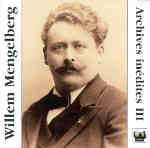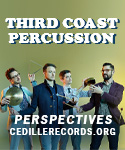Tahra unearths more previously unissued Beethoven broadcasts featuring the Concertgebouw Orchestra under Willem Mengelberg. Interpretively speaking, the Second Symphony performed on May 14, 1936 differs little from the conductor’s two later live versions–from April 21, 1940 and March 21, 1943. While sonic grit infiltrates loud tuttis, the overall recorded balance reveals a well-proportioned orchestral image that’s less hard-hitting than in 1940. For this reason, the 1936 Adagio seems markedly broader, although its total timing adds but 13-odd seconds to the 1940 reading.
As in his live 1937 and 1940 studio Pastorales, Mengelberg propels the outer movements with steady, fleet basic tempos, punchy accents, and fewer gearshifts than the Mengelbergian norm (the “traditional” bassoon ritards in the first movement, though, are drawn out to the point of caricature). The present performance captures more hall ambience, however, and unlike 1937 and 1940 Mengelberg observes the first-movement exposition repeat.
Mengelberg’s conception of the Seventh proves no less idiosyncratic. The outer movements are impressively incisive (if not terribly subtle) and full of rhythmic brio, but the conductor’s affetuoso phrasings cause the Andante’s spine to droop and shrivel. The Scherzo’s energeticallly dispatched main section (played faster here than in 1940) contrasts with its taffy-pulled Trio, where the last measures disintegrate into dust.
Once you catch on to how Mengelberg whips up loud tuttis and moons over lyrical transitions, you’ve essentially pinned down his modus operandi in the Violin Concerto–not to mention the god-awful solo work of Louis Zimmermann, whose simpering tone, gypsy-like phrasing, cloying portamento, and sketchy technique give new meaning to the words vulgar and provincial. Those whose lives won’t be complete without a Mengelberg Beethoven Violin Concerto are advised to hunt down a Japanese release on the Seven Seas label (KICC 2060) featuring Giula Bustabo’s infinitely more tasteful and technically accomplished traversal of the solo part. In sum, a release aimed for hard-core Mengelberg mavens and ultra-specialist collectors.
































